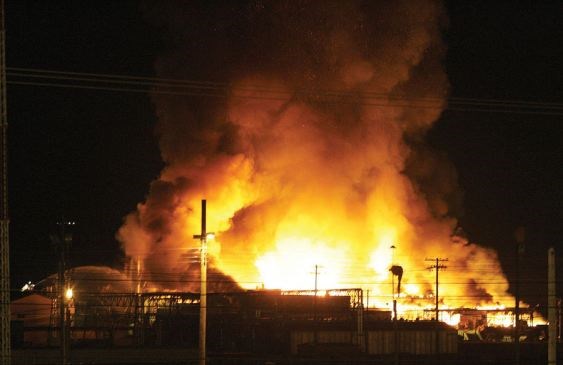Other than to dispute WorkSafeBC's conclusion on the source of ignition, no firm conclusions were reached by a firm the sawmill's owners hired to conduct an investigation into the cause of the Lakeland Mills explosion, a coroner's inquest heard Tuesday.
Stressing that "reasonable people can disagree," Paul Way of CASE Forensics, a U.S.-based forensic engineering firm said its investigators eliminated a gear reducer located under the mill's slasher deck as the ignition source.
Glenn Roche, 46 and Alan Little, 43, died from injuries suffered in the April 23, 2012 blast that left more than 20 others with injuries, many serious.
A WorkSafeBC investigation had concluded the ignition point was a fan on a gear reducer in the sawmill's basement that heated up to the point where it ignited some surrounding sawdust after coming lose and jamming into a screen.
But Way said a bucket placed in a bracket a few feet away from the gear reducer was found by CASE investigators. If the gear reducer was the ignition point, Way said the force of the subsequent explosion would have dislodged the bucket.
A hot surface, a broken light bulb, electrical arcing and static electricity were listed as other possible causes, but Way said CASE was unable to conclude that any of them were "probable," or more than 50 per cent likely to have been the source.
Consequently, CASE limited itself to concluding the area of origin was in either the basement or on the operating floor in the vicinity of the mill's large and small headrigs.
That said, of the possibilities listed, Way said static electricity created when Roche was blowing down the large headrig with an air wand was the "most likely" ignition source.
He said a spark from the air wand combined with the dust cloud the action created was enough to provide both the ignition source and the fuel for the initial blast.
Don Zwozdesky, an electrician at Lakeland, said in an interview after the blast that he had walked past the gear reducer just moments before the explosion and did not notice much dust in the area, Way noted.
Following the blast, Roche, by then badly burned, also told Zwozdesky he had been conducting blow down when "he was enveloped in a cloud of flame," Way also noted.
Way added the blast occurred shortly after the mill's 9:30 p.m. lunch break had begun so there was no other nearby machinery operating that could have produced a spark.
Way said there would have been enough containment in the area for a "deflagration" or low-velocity explosion characterized by a "whoosh" rather than a "boom."
He said there were subsequent blasts as the deflagration spread to other fuel sources.
The inquest, which resumed Monday, was put on hiatus in late March when coroner's counsel John Orr learned Lakeland was willing to hand over CASE Forensic's work to the coroner and wanted some time to review the material.
Paul Orr, WorkSafeBC's lead investigator who presented the agency's findings earlier in the inquest, is scheduled to return to the witness stand on Wednesday to answer questions raised by CASE Forensic's findings.



